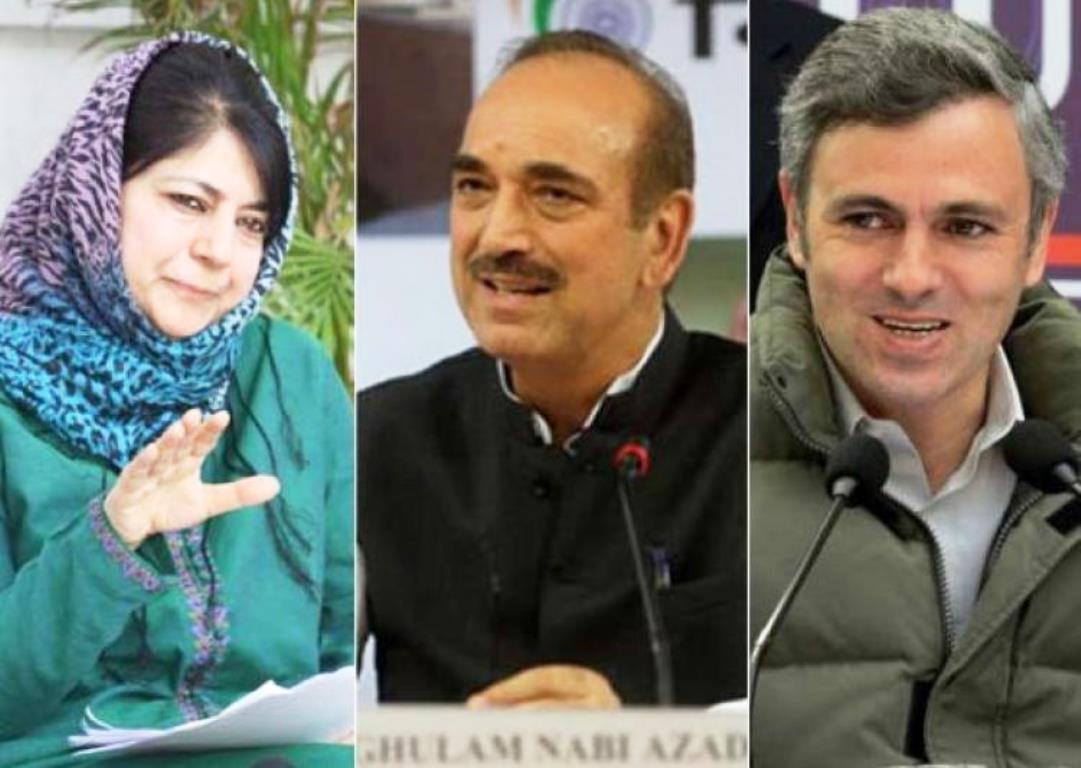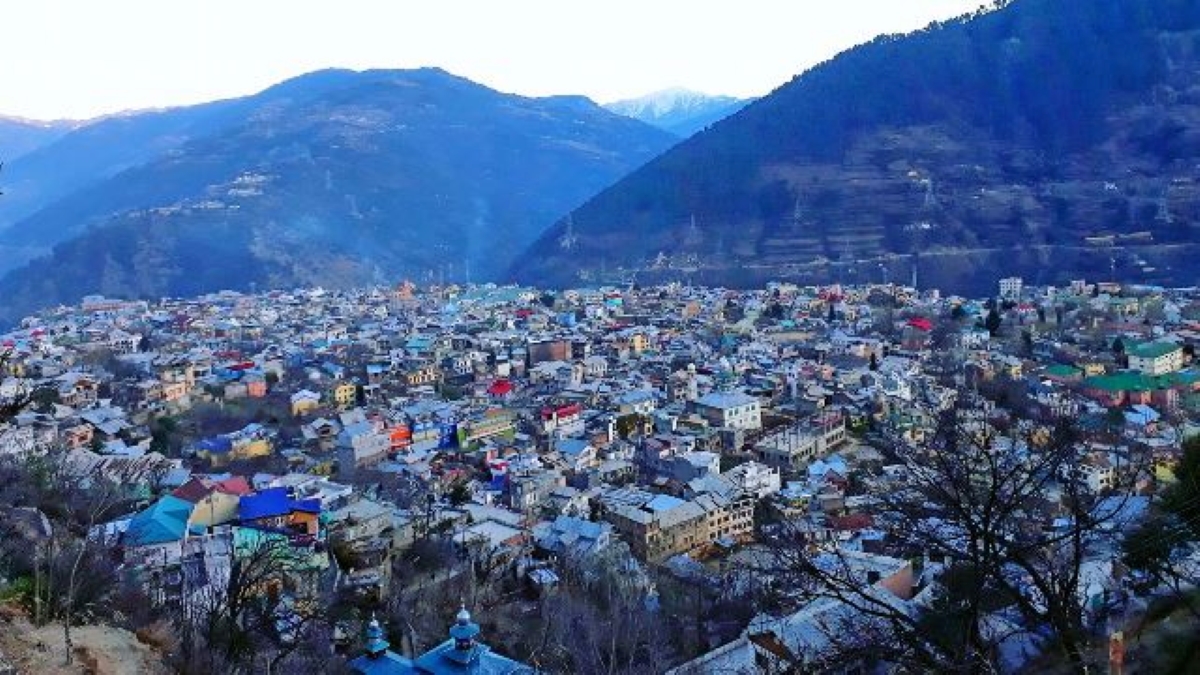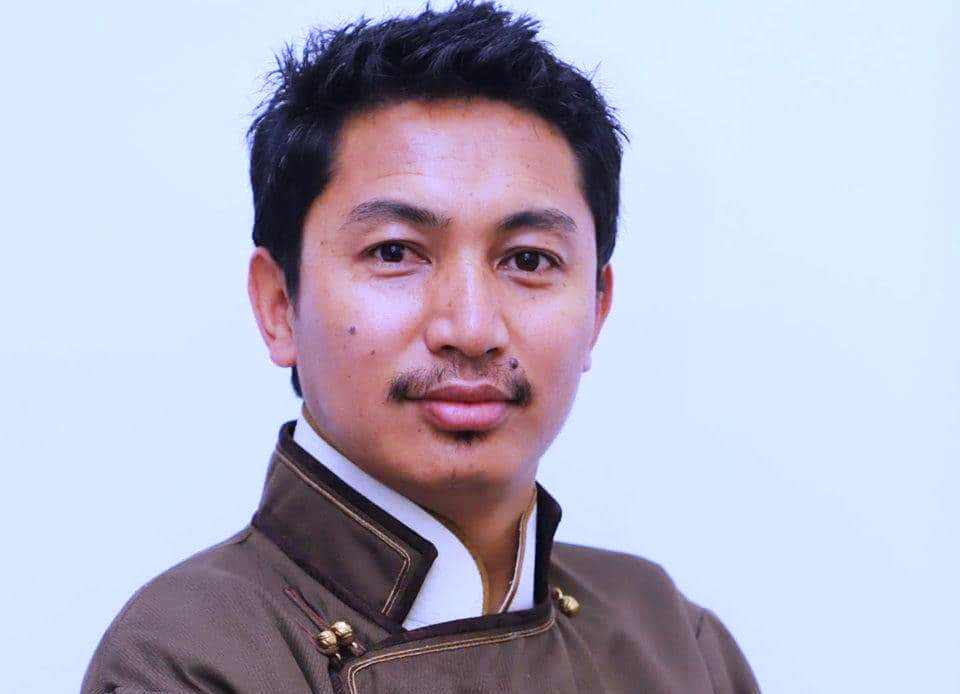With “restricted” political activity in Kashmir and confusing signals emanating from Jammu plains, three former Chief Ministers’ had extensive tours of the Chenab Valley. Their choice of the region for the revival of political activity is not very different from the BJP

With Kashmir’s virtual politics dominated by two young men with unsound minds, a Deputy Sarpanch and a defeated DDC candidate, the political class got instantly active in the mini-Kashmir, the Chenab Valley. Congress, the National Conference and the Peoples’ Democratic Party (PDP) having a significant support base in Kashmiri-speaking regions of the erstwhile state drew crowds as the three former Chief Ministers’ made bold speeches.
Justifying the outreach, the parties said Kashmir being their principal engagement runs the risk of keeping the peripheral regions available for political experimentation by the establishment. On the flip side, however, there were clear indications that their activities have laid bare the fissure within the “like-minded”. Besides, many think that the BJP facing the music over its governance failures from within the Hindu population was keen to let go “Kashmiri Muslim” politicians in the region so that it contributes to the consolidation of the Hindu votes again.
Azad Starts
It was Congress leader Ghulam Nabi Azad, who set the alarm bells ringing in Srinagar when he started touring the region. Enjoying some sort of “immunity” with the establishment, unlike his local counterparts, he has always been the frequent politician active in Jammu nd Kashmir after August 2019. He even went to the Supreme Court and got permission to visit.

Impressive crowds came to listen to him. His visit to the region started with the tensions within the Congress as most of his loyalists took heir Jammu and Kashmir leader, G A Mir’s “incompetency route” to resign from the party positions. They said the party has been hijacked by a group of people who have isolated it from within as a result of which a lot of top leaders including lawmakers and former ministers quit the party and joined the Apni Party, Peoples Conference and BJP.
Azad, a former Chief Minister of Jammu and Kashmir and perhaps the only one from the Jammu region since 1947, who is already seen as the rebel in his own party in Delhi, distanced from the resignations. This, however, fuelled the political grapevine that he eventually might be the choice of BJP-controlled Delhi for managing Jammu and Kashmir. Though he reiterated that he will always be a Congressman, the developments did fuel the apprehension that BJP is keen to create a new political formation that will draw its support from Pahari and Gujjar dominated areas of the erstwhile state. This they believe is aimed at dividing the majority vote and consolidating the minority mandate.
His speeches added to the panic in Kashmir’s political class. Though his focus remained on Kashmir centric politics, ideally the domain of NC and PDP, he did talk about the induced divisions of people as part of politics being enforced in the region. He even said the delimitation is being done with a political model in mind.
The focus of Azad, however, remained on the restoration of the statehood of Jammu and Kashmir and not the restoration of Article 370, as has remained the key war cry of the NC and PDP, who are in a loose grouping called People’s Alliance on Gupkar Alliance (PAGD). Azad’s statement that talking about Article 370 was useless added a lot of tensions within the PAGD.
Earlier in Kokernag, Azad had said there was “no possibility” of restoring Article 370 and 35-A by the BJP and the restoration of Statehood was in fact the party commitment it had made when it made the August 5, decision in 2019.
Mehbooba’s Tour
Former Chief Minister, Mehbooba Mufti, whose PDP phenomenally shrunk post-August 5, 2019, has remained a hugely restricted politician in Kashmir. However, she was permitted to move out of Kashmir to the Chenab Valley. She visited the region for almost a week and talked in the undiluted acidic style on the Kashmir situation. Her visit took off from Banihal where an equally impressive crowd heard her with apparently better crowd response.

Unlike NC, PDP lacks an influence in the Chenab Valley. Barring a few people, most of her earlier members have either gone silent or simply switched sides. But the tour suggested that at ground zero, she had a lot of ears that could be built up if the situation permits.
Omar’s Visit
With Mehbooba still in the region, Omar led his party leaders from Jammu. They visited many places and everywhere got a rousing reception. The region has had impressive footprints of the party till the NC decided to share its support base with the Congress. Still, it has the capacity to trigger a turnaround if it is able to manage to expose the tacit support that Congress invisibly extended to the BJP on Article 370, according to party insiders. Party leaders said Congress fled from the PAGD simply because it did not want to take a stand on Art 360 fearing a crisis in the mainland.

During his tour, Omar did make interesting disclosures. During his speeches, Omar repeatedly said that “some people” are not interested in holding elections and are resorting to conspiracies. These people, party insiders said are in the governance structure and not in the political class of Jammu and Kashmir. Even a section within BJP wants early elections.
Key Focus
Apart from accusing the BJP of manipulating Kashmir to meet its political ends and talking about the deteriorating situation in Kashmir in the last more than two years, all the three former Chief Ministers’ did talk loudly about the political project in the delimitation process.
“We want that there should no political interference, “Omar said in Doda. “The 2011 census data-driven delimitation should take place.” He regretted that BJP wants “maps of assembly constituencies to redrawn in such a way that benefits them most politically.”
Azad also talked about the BJPs plans to manipulate the delimitation process and carve out segments that will give the party a numerical advantage in Muslim majority territory.
Most Fragile Region
In Jammu and Kashmir, the undergoing delimitation process has huge limitations. Barring a few seats in Kashmir and Jammu, it lacks the capacity to trigger major changes. Even Rajouri Poonch belt is not offering adequate demographics to suit the new political cartography. The only region that offers immense possibilities in the Chenab Valley region comprises the districts of Kishtwar, Doda, Ramban and parts of neighbouring Reasi, perhaps the only districts where the Hindu and Mulsim population is almost equal.

In the Rajouri Poonch belt, usually referred to as Pir Panchal valley, Muslims in the twin districts comprise 74.52 per cent of the 1119250 people, according to the 2011 census. The Hindu population stands at 34.53 per cent in Poonch and 34.53 per cent in Rajouri.
In comparison, three Chenab Valley districts are home to only 924345 people of whom 39.22 per cent are Hindus and 59.97 per cent are Muslims. Terrain and population pockets in the region could help the new map-drawers to carve out special segments to suit their political ends, insiders in the NC, Congress and PDP say.
Apart from this region, the political grapevine is that the BJP has focussed on border belts and in certain areas of Kashmir periphery where the assembly berths are expected to be kept reserved for certain categories. When the Kashmir leaders were in the Chenab Valley region, BJP’s Jammu and Kashmir leadership was in a sort of celebration in a Kashmir border town.
The delimitation commission set up on March 6, 2020, is mandated to identify assembly berths from existing 107 to 114.
Jammu and Kashmir assembly had 111 assembly berths that were reduced to 107 after Ladakh was separated. Of the 107, 24 stand reserved to areas of Jammu and Kashmir currently under the control of Pakistan, the PaK, leaving effective strength to 83 seats. The Commission will add seven seats more. These seven berths could alter the balance of power in the Muslim majority Jammu and Kashmir and that is where the concern of the Kashmir party is.
Fissures Within
The touring of the three former Chief Ministers also exposed the crisis within. Omar Abdullah openly criticised Azad for giving up the Nehruvian legacy by saying that talking about Article 370 is a wastage of time and the political class should work for the early restoration of statehood.
Omar also kicked the PAGD ally, the PDP by holding Mufti Sayeed responsible for bringing in BJP in the state through an alliance, at a time when the NC had offered unconditional support to the party in making the government in the state. This statement however triggered a huge controversy.

PDP choose to ignore the attack. But Sajjad Lone of the Peoples Conference, who earlier came out of the PAGD, said Omar lacks the moral authority to blame anybody for allying with BJP when he personally was the minister in the BJP government in 1999. “The first one to be with the BJP was Omar Abdullah himself,” Lone said, terming him “the biggest charlatan of Kashmir”. Lone, who is accused of heading one of the two “king’s” parties – the other being Apni Party, said the PDP and NC have been supportive of BJP.
In Peripheral Politics, Kashmir Politicians Try Hitting Each Other
Interestingly, the Peoples Conference and the Apni Party have chosen not to get into Chenab Valley or the Pir Panchal Valley. Apni Party, however, has some footprints in the region as the Congress’s Khan Brothers have joined it.















